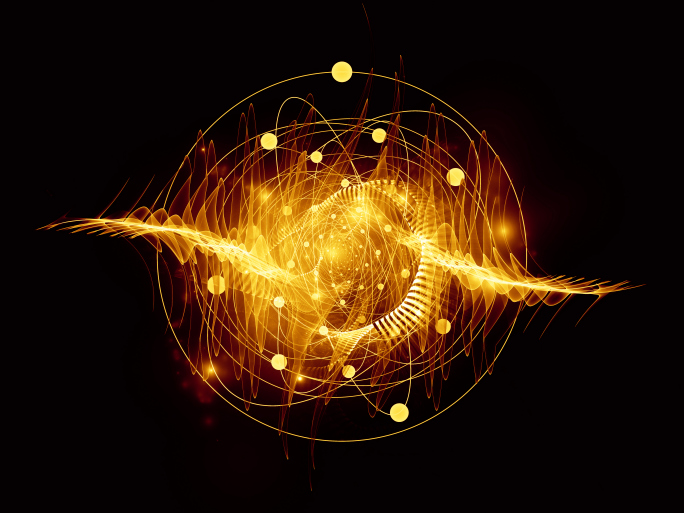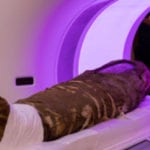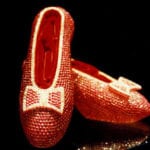 History
History  History
History  Technology
Technology Top 10 Everyday Tech Buzzwords That Hide a Darker Past
 Humans
Humans 10 Everyday Human Behaviors That Are Actually Survival Instincts
 Animals
Animals 10 Animals That Humiliated and Harmed Historical Leaders
 History
History 10 Most Influential Protests in Modern History
 Creepy
Creepy 10 More Representations of Death from Myth, Legend, and Folktale
 Technology
Technology 10 Scientific Breakthroughs of 2025 That’ll Change Everything
 Our World
Our World 10 Ways Icelandic Culture Makes Other Countries Look Boring
 Misconceptions
Misconceptions 10 Common Misconceptions About the Victorian Era
 Mysteries
Mysteries 10 Strange Unexplained Mysteries of 2025
 History
History 10 Things You Didn’t Know About the American National Anthem
 Technology
Technology Top 10 Everyday Tech Buzzwords That Hide a Darker Past
 Humans
Humans 10 Everyday Human Behaviors That Are Actually Survival Instincts
Who's Behind Listverse?

Jamie Frater
Head Editor
Jamie founded Listverse due to an insatiable desire to share fascinating, obscure, and bizarre facts. He has been a guest speaker on numerous national radio and television stations and is a five time published author.
More About Us Animals
Animals 10 Animals That Humiliated and Harmed Historical Leaders
 History
History 10 Most Influential Protests in Modern History
 Creepy
Creepy 10 More Representations of Death from Myth, Legend, and Folktale
 Technology
Technology 10 Scientific Breakthroughs of 2025 That’ll Change Everything
 Our World
Our World 10 Ways Icelandic Culture Makes Other Countries Look Boring
 Misconceptions
Misconceptions 10 Common Misconceptions About the Victorian Era
 Mysteries
Mysteries 10 Strange Unexplained Mysteries of 2025
10 Baffling Scientific Mysteries Of Everyday Things
How do bees fly? Why do some corals pulsate? What is ball lightning? Those questions are now answered (or at least mostly answered). You might even think that all everyday things are now well understood, with mysteries relegated to the rare, the remote, and the recondite. Yet many everyday things still harbor their secrets.
10Sticky Tape

If you peel certain kinds of sticky tape (including Scotch tape) in a vacuum, it produces short bursts of X-rays. A group of UCLA scientists first noticed this crazy fact in 2008, although Soviet scientists had observed something similar (producing high-energy electrons rather than X-rays) in the 1950s. It seems that no one believed the Soviet findings. How could peeling tape generate such high-energy electrons? Since 2008, many other scientists have produced X-rays with sticky tape, so it seems to be a real phenomenon—but how does it happen?
We know that peeling the tape causes charge to build up, just like static charge builds up if you pet a cat with a credit card. It’s called the triboelectric effect. Once the charge (and associated electric field) gets big enough, there’s a sudden discharge—a burst of electrons jumps and gets going so fast that when the electrons hit some matter, they emit X-rays. The problem is understanding how the electrons get going so fast. The 2008 paper concluded: “The limits on energies and flash widths that can be achieved are beyond current theories of tribology.”
9Protons

Everyday objects are made of atoms and every atom contains one or more protons. The simplest atom—hydrogen—consists of one proton and one electron. A proton can be modeled as a tiny ball with a constant radius. Using data from experiments with hydrogen, scientists have estimated the radius of the proton. Their current best estimate (the CODATA 2010 value) is 0.8775 femtometers, with an uncertainty of plus or minus 0.0051 femtometers. A femtometer (fm) is one quadrillionth of a meter.
Scientists wanted a smaller uncertainty than 0.0051, so Randolf Pohl and his colleagues did experiments with an exotic form of hydrogen called muonic hydrogen. It’s just like regular hydrogen, except the electron is replaced with a muon, a particle similar to an electron but with much greater mass. As expected, Pohl et al reduced the uncertainty down to 0.00067 fm and a later experiment reduced it even further. But there was a surprise—they got a much smaller value for the radius of the proton itself!
Here’s an analogy. Suppose you had a cheap measuring stick and you used it to measure the radius of a giant beach ball to be 1 meter, with an uncertainty of 0.1 meters. Then suppose you got some fancy giant calipers and you used them to get a measurement of 0.5 meters, with an uncertainty of 0.01 meters. What’s going on? The ball shouldn’t have a different radius depending on how you measure it! Yet that’s exactly what’s happening with the proton radius measurements.
Maybe the stated uncertainty in the CODATA 2010 value is too small? Maybe some other values used in the calculations are wrong? Or maybe some new physical phenomenon has been discovered? It’s a mystery.
8Women

Men have an X chromosome from their mom and a Y chromosome from their dad. Women have an X chromosome from their mom and a (different) X chromosome from their dad (other combinations of X and Y chromosomes can occur, but XY and XX are the most common). Each cell in a woman’s body has copies of both X chromosomes. Starting in 1949, a sequence of discoveries led to the realization that one of those X chromosomes is always inactive—most of the genetic information on that X chromosome is ignored.
Suppose we have a cell from a woman where the X chromosome from her mom is inactive and the X chromosome from her dad is active. Let’s call that a “dad-cell.” Let’s call the other possibility a “mom-cell.” How does a cell decide whether to become a mom-cell or a dad-cell? Scientists once thought it was completely random—the cell did the equivalent of a coin toss. But recent experiments with mice showed that an entire organ (an eye, for example) can be mostly mom-cells or mostly dad-cells. It’s not random! It’s a mystery how the cell decides.
7Animal Magnetoception

Birds do it, bees do it, even ocean-roaming sharks do it—sense magnetic fields, that is. It’s known as magnetoception (or magnetoreception). How do they do it? There are two leading hypotheses.
The first (and oldest) hypothesis is that some animals have tiny bar magnets in some of their cells. The idea is that those bar magnets line up with the Earth’s magnetic field like compass needles, and their orientations are communicated to the brain. It’s not a crazy idea: Tiny bar magnets were found in pigeon beaks, for example. Unfortunately, the beak cells with bar magnets turned out to be immune system cells, unable to communicate with the pigeon’s brain.
The second leading hypothesis is that there’s a protein in the eye which, when it gets hit by blue light, splits into two pieces which are sensitive to magnetic fields. Of course, it’s possible that some animals use both mechanisms. It’s also possible that there are other mechanisms entirely. The science of animal magnetoception is still young, so a lot remains unknown.
6Blushing

Blushing is an involuntary reddening of the face, usually due to strong emotion or stress. It’s well-known that the reddening is due to widened blood vessels (vasodilation), but what triggers the vasodilation?
The first hint came in 1982, when Mellander et al found that facial veins have beta-adrenoceptors in addition to the usual alpha-adrenoceptors. Those receptors can be triggered by adrenaline and similar molecules associated with emotional response. Maybe the beta-adrenoceptors in the facial veins are what trigger blushing?
In the 1990s, Peter Drummond, a professor of psychology at Murdoch University, did some experiments to find out. Some of his test subjects were given drugs to block alpha-adrenoceptors and others were given drugs to block beta-adrenoceptors. He then had them perform stressful mental arithmetic, sing, or do moderate exercise (things which typically cause blushing) and measured their response. As expected, blocking alpha-adrenoceptors didn’t affect blushing. Blocking beta-adrenoceptors caused a decrease in blushing, but it didn’t prevent blushing altogether. There must be something else triggering blushing (vasodilation)—but what? It remains unknown.
5Glass

Glass is everywhere in modern life: smartphone screens, soda bottles, coffee mugs, kitchen windows, you name it. Surely scientists and engineers understand glass. But in reality, glass is still deeply mysterious.
The mystery is in how glass forms. You can make glass by heating up a glass-forming substance like silicon dioxide until it’s liquid and then letting it cool. Unlike, for example, salt, which changes from a liquid to a crystalline solid at a specific temperature, glass gets more and more viscous as you cool it. If you get the temperature low enough, glass gets so viscous that it becomes solid, even though its molecules aren’t neatly arranged. In 2007, the American physicist James Langer wrote: “We don’t know what kind of transformation occurs when a liquid becomes a glass or even whether that familiar change of state is actually a thermodynamic phase transition like condensation or solidification, or something completely different.” The mysterious “glass transition” is still a topic of active research.
4Peanut Allergies

In the United States, the number of children with a peanut allergy has risen dramatically in recent years. One study found that the prevalence in children rose from 0.4 percent in 1997 to 1.4 percent in 2008. Similar results were found in the United Kingdom, Canada, and Australia. Why? There are lots of theories.
Probably the most common idea is the hygiene hypothesis. Some modern children grow up in very clean environments, where they’re not exposed to the same bacteria, fungi, pollen, viruses, etc. as the children of previous times. The hypothesis is that their immune system develops differently as a result, so it responds differently to peanuts.
Another possibility is that peanuts are processed differently now (they’re roasted) which could conceivably make them more allergenic. Or perhaps modern kids aren’t getting enough vitamin D? Maybe peanuts are being introduced too late? There are lots of possibilities, but not many answers.
3Black Widow Venom

Black widow spiders are found in temperate places all over the world. When they bite humans, the venom often causes awful, body-wide pains and blood pressure fluctuations which can go on for days. According to Gordon Grice’s The Red Hourglass, “Some [victims] have tried to kill themselves to stop the pain.” How does the venom work? This is where things get mysterious:
“A dose of the venom contains only a few molecules of the neurotoxin, which has a high molecular weight—in fact, the molecules are large enough to be seen under an ordinary microscope. How do these few molecules manage to affect the entire body of an animal weighing hundreds or even thousands of pounds? No one has explained the specific mechanism.”
Somehow, the neurotoxin must trick the body into attacking itself. Understanding how it does that might provide insights into autoimmune disorders and other conditions where the body attacks itself.
2Ice

Hockey players and figure skaters glide across the ice because it’s very slippery—but why is it so slippery? The same skates won’t glide across asphalt, glass, or steel plate.
The old answer was that the skate exerts pressure on the ice. The increased pressure lowers the melting point of the ice, causing it to melt and create a thin layer of liquid water, which is slippery. The problem with that answer is that the pressure isn’t big enough to explain the observed slipperiness.
Two other answers have been proposed. One is that friction melts the ice. The other is that the ice/air boundary always has a thin layer of liquid water. There’s experimental evidence for both of those answers, so it might be a combination, but the relative contribution of each isn’t known. There might also be other mechanisms at work. The slipperiness of ice isn’t water’s only weird property—there are many more. For example, it has an unusually high melting point.
1The Dominance Of Matter

Almost everything around us is made of matter, not antimatter. When antimatter does manage to get produced (in the radioactive decay of certain atoms, for example, or in some thunderstorms), it usually runs into some matter and quickly vanishes in a burst of high-energy gamma rays.
The problem is that the current best model of fundamental particle physics, the Standard Model, predicts that equal amounts of matter and antimatter should have been produced by the Big Bang. Yet there seems to be more matter than antimatter. Why?
One possibility is that the Standard Model needs to be revised so that the revised version predicts a slight preference for producing matter over antimatter. Another possibility is that the Standard Model is fine, but somehow the antimatter and matter became separated, with empty space between them. But what mechanism would separate them? Gravity would pull them together, not push them apart.
This problem is known as the baryon asymmetry of the universe. It remains one of the big unsolved mysteries of modern-day physics.
Troy McConaghy is a researcher and writer from Canada. @TroyMc on Twitter.








